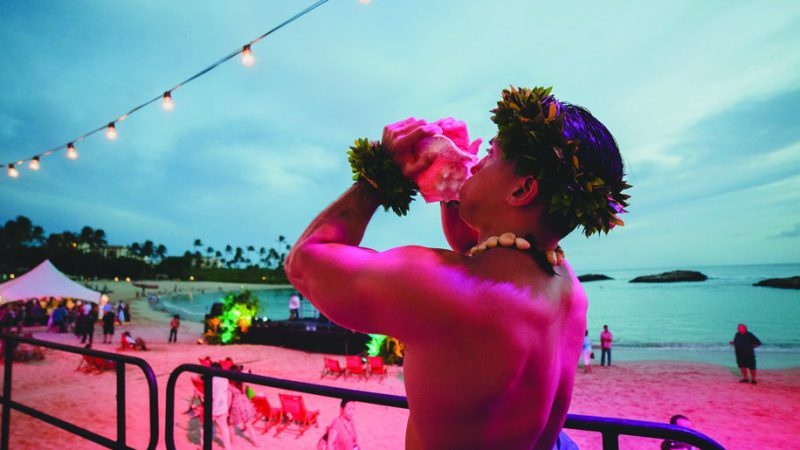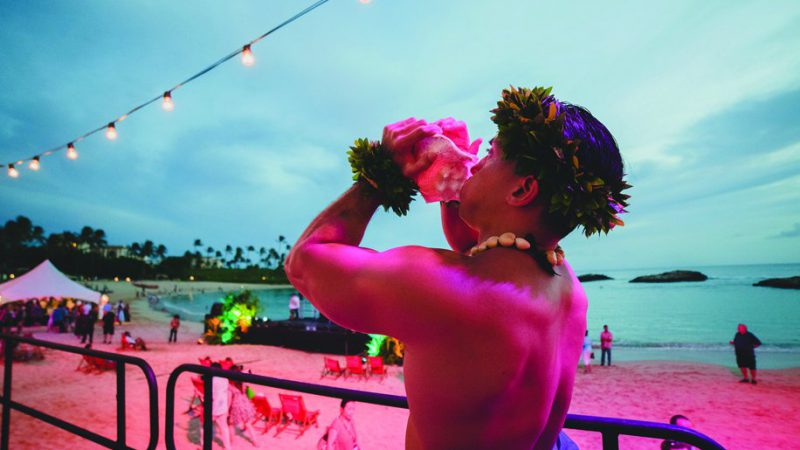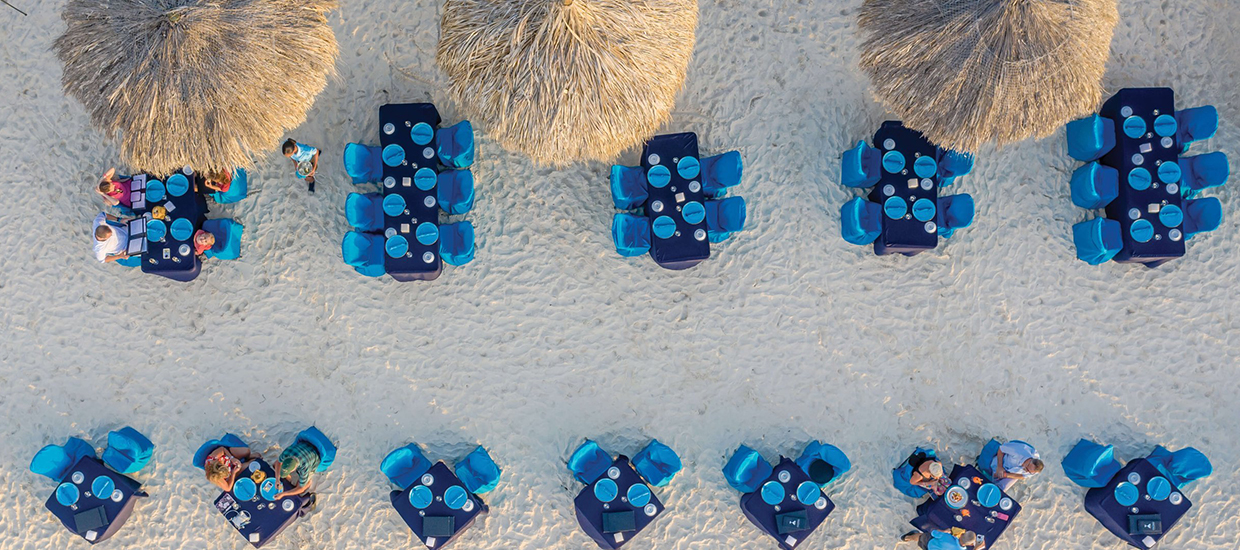Food for Thought
How one culinary festival became a community financial engine
November 30, 2019


Festival tourism is taking off worldwide; the concept encourages destinations to center marketing efforts around annual events that can benefit from visitor attendance. This leads to meaningful economic growth for communities through a new source of tourism, similar to the way sporting events like the Olympics or World Cup might spur growth.
That’s what makes the Hawaii Food & Wine Festival so interesting. What started as a casual discussion between Chef Roy Yamaguchi and several other chefs has grown into an economic engine for the state. The brainchild of Yamaguchi and his festival co-founder Alan Wong, the event is considered a significant contributor to the spread of Hawaiian culture through cuisine globally.
They decided to host a small-scale food festival to benefit local farmers in a parking lot. It was a hit.
Today, the festival is gearing up for its tenth year in 2020. It has expanded from one weekend to a series of events on the Big Island, Maui and Oahu that includes 120 chefs, 30 winemakers, and 30 mixologists. Last year’s event drew nearly 9,000 attendees from around the world. There are wine-paired dinners, craft cocktail events, and one-on-one mingling opportunities with big-name chefs like Michael Chiarello, Dean Max, and Chris Cosentino among many others.
According to Wong, Hawaiian food is more than what is served at a tourist luau. He says it’s really a fusion of cultures including Portuguese, Spanish, Filipino, Japanese, Chinese, and Korean flavors among many others.
This one annual event has led to an economy surge in Hawaii’s culinary and farming industry, and the idea is one other communities may be able to benefit from.
Nonprofits Benefit
The 2018 festival benefited 23 non-profit organizations like the Hawaii Agricultural Foundation, the Maui County Farm Bureau, the Culinary Institute of the Pacific, and eight public high schools. In its first eight years, the festival donated more than $2.5 million to area organizations.
The Hawaii Agricultural Foundation promotes farming and sustainability through educational assistance and outreach programs while the Hawaii Farm Bureau acts as an advocacy organization for farmers that would otherwise not have as much collaborative influence individually.
The festival’s primary goal, says Denise Yamaguchi, executive director of the Hawaii Food and Wine Festival and Roy’s wife, is to highlight the plethora of produce and talent available on the island. She says that most chefs from outside Hawaii have no idea the range of produce, herbs, spices, and other ingredients Hawaiian farmers offer.
“We procure 100 percent of the ingredients for chefs,” Denise says. “They choose from our list of hundreds of local ingredients, and we reach out to local farmers to source what they need at our own expense. This assures quality while supporting local farmers.”
There’s even an annual “emerging crop” recipe contest where participating chefs submit innovative recipes using a native ingredient with the goal of increasing its distribution to restaurants and hotels around the state.
Proceeds from the festival also support culinary education programs and allow area students the opportunity to work with big-name chefs. Over the years, the number of James Beard Award semifinalists and nominees from Hawaii has almost doubled, which is testament to the benefit the festival has on local students.
Tourism Benefits
The food festival has seen an uptick in attendance, which helps hotels, restaurants, and tour companies. The latest statistics show that there was a $2.45 million visitor expenditure over the nine days of last year’s festival alone. In media exposure, the 2018 festival generated close to $9 million in advertising value, which for many communities is far more than they would be able to spend on their own.
The bigger picture is even more exciting, says Denise. Before the festival, Hawaii had few Michelin-starred chefs, but this has steadily increased. Chefs like Michael Mina and Takeshi Kawasaki of Maru Sushi come here, realize the range of ingredients on offer, and decide to open outlets in Hawaii.
Awareness of Hawaiian cuisine grows, too, as mainland chefs take notice and bring popular items to their other restaurants. Denise says the proliferation of poke on menus around the world is a great example of Hawaiian food becoming more mainstream as a result of the food festival.
Named one of Travel Channel’s best food and wine festivals and a top 15 North American contender by Fodor’s Travel, this food festival has been a boon to the community. As travelers look for more immersive experiences, festival tourism can contribute benefits to the communities that host them, and great experiences for the travelers who attend them.




